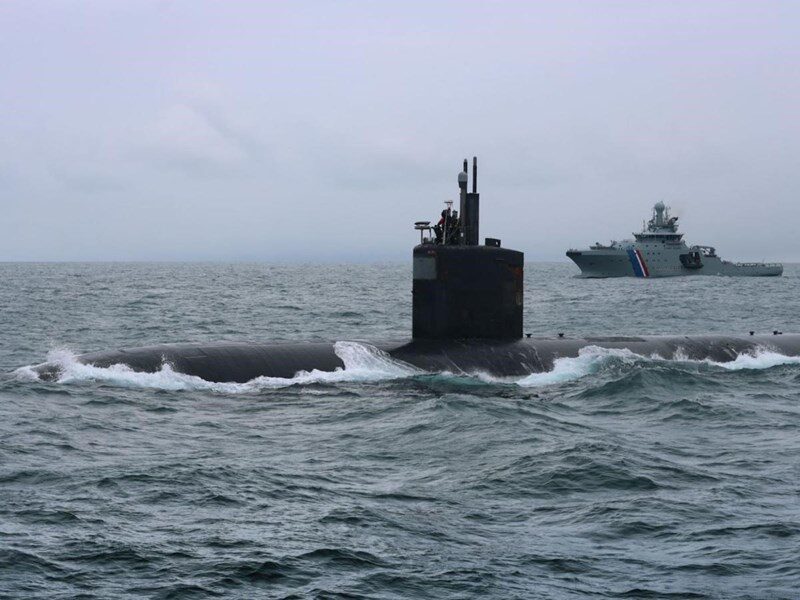
© US Embassy ReykjavikUSS San Juan off the coast of Iceland on April 26, year unknown
The Naval Sea Systems Command
believes that "planning, material availability, and shipyard execution" is to blame, as per a statement issued in response to the new data.
According to previously undisclosed data by the US Navy published by the Congressional Research Service,
18 of the 49 attack submarines - 37% - were out of commission and in repair just this year - which is double what the Navy estimated.
This data leaves the US at a high disadvantage against
China's quantitatively superior fleet.
CRS naval analyst Ronald O'Rourke said in a report on July 6 that the maintenance backlog has "substantially reduced" the number of nuclear submarines that are considered operational at any moment, which cuts the "force's capacity for meeting day-to-day mission demands and potentially putting increased operational pressure" on submarines currently in service.
In 2017, the number was at 28% overall and 33% in 2022 and below the industry best practice of 20%.The Naval Sea Systems Command believes that "planning, material availability, and shipyard execution" is to blame, as per a statement issued in response to the new data, adding that the service launched several initiatives to tackle "primary maintenance delay" drivers.
The Command released an updated maintenance backlog status, claiming that 16 of 49 subs, or 32%, were in repair as of late June.
A loss of more than 28 years' worth of operationThe US has occasionally shown off its submarines but increasingly did so the last year with publicized port visits in the
Arabian Sea, at Diego Garcia, at Gibraltar, and in the Atlantic. The most recent showcase was in June during the appearance of the guided-missile submarine
USS Michigan in Busan, South Korea.
One example of the submarines in repair is
the USS Connecticut, which is one of three premier Seawolf-class subs after it hit an underwater mountain in the South China Sea almost two years ago and is not due for operation until 2026 at the earliest.
The fiscal year 2015 was considered the best year for attack submarine availability since only 19% - or 10 of the then 53 subs - were in repair according to data in a June 13 Navy information paper.
Last year, the Government Accountability Office announced that the Navy was at
a loss of 10,363 operational days from 2008 through 2018, which is equal to more than 28 years "as a result of delays in getting into and out of the shipyards."GAO Spokesperson Chuck Young said the newly released statistics "are not surprising considering how the
shipyards have been struggling to support the fleet with old facilities and inefficient layouts".The Navy is currently five years into a 20-year plan to restructure the four available shipyards, but Young claims that it still doesn't have reliable cost or schedule estimates five years after the improvement effort began, and a better prediction won't be available until 2025.
We can expect the USA submarines and ships to not be sea-worthy and we will see many of them failing or sinking due to mechanical or human error. Why? You can't have stupidity in the war machine.